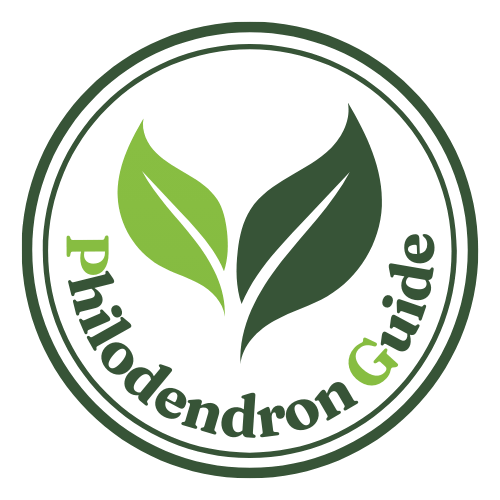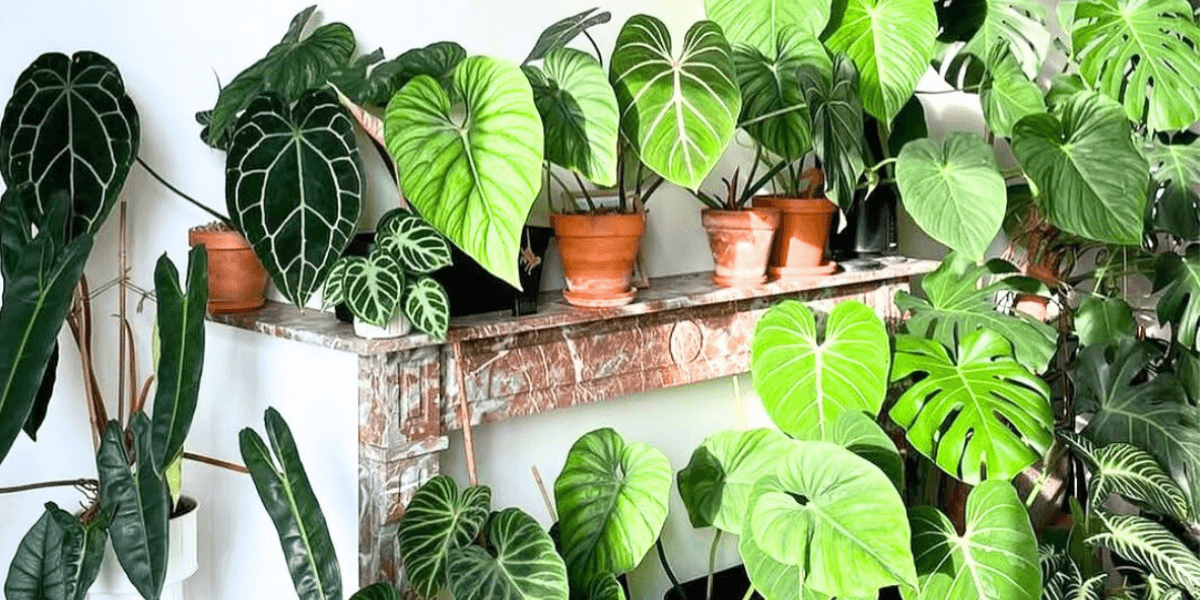Why Light Exposure Matters for Philodendron Plants!

Philodendrons are among the most popular houseplants, and light exposure matters for philodendrons plays a crucial role in their growth and health. Admired for their lush green leaves and low-maintenance care, these plants may struggle without proper light exposure for philodendrons, they may struggle, exhibiting slow growth, small leaves, or even decline. But how do you determine the best light conditions for your philodendron? In this article, we’ll explore the essential aspects of light exposure to help your philodendron thrive.
What Is a Philodendron?
Philodendrons originate from the tropical forests of Central and South America. These plants come in various species, each with distinct leaf shapes and sizes. Despite their adaptability, philodendrons need the right conditions to grow well, and light exposure matters for philodendrons is one of the most important factors influencing their health and development.
Importance of Light Exposure for Philodendron
Light is essential for photosynthesis, the process through which plants convert light energy into food. If a philodendron does not receive adequate light, it will have difficulty producing energy, leading to stunted growth, pale or small leaves, and an overall weak appearance. Ensuring the right light exposure matters for philodendrons can make a significant difference in their overall vitality.
Natural Habitat and Its Effect on Light Needs
The natural habitat of philodendrons is located in sub-vegetation, where it can only access the dapple sunlight of the forest canopy. Even so, this makes knowledge of such conditions useful. Given that such plants are used to the former, there is no need for the latter in order for them to flourish.
Light exposure matters for Philodendron Plants
Philodendrons prefer bright, indirect light. Direct sunlight, especially during peak hours, can scorch their leaves, causing brown or yellow patches. Ideally, they should receive 6–8 hours of filtered light daily to maintain optimal light exposure matters for philodendrons indoors
How Much Light Does a Philodendron Need?
In an ideal situation, apartin from the dark hours, it is best that pupil trees spend time receiving about 6-8 hours of bright radiation indirectly. There will still be leaves, but the rate of growth will be less, and the plants will be paler than colorful where they are in an area with more sunshine.
Best Locations for Philodendron Indoors
Place your philodendron in a warm room with available access to an eastern or northern window. Gentle sunlight is generally fed by means of the windows that are directed towards the east side of the house and this is also safer for the philodendrons. Plants can be very hot so when intending to position it on west or south facing windows, keep it away from the window by a few feet or protect it with a curtain.
Morning Light Considered Together with Afternoon Light
The morning sunlight is much smoother while the afternoon sun can be blistering and scorching. When sunlight is particularly strong in the afternoon, the philodendron may get burned and discolored leaves. It is better to provide filtered bright light or soft light in the morning.
Light Exposure Matters for Philodendron: What Whole Sunlight Can Do
Whole sunlight is just too much for philodendrons in case they are brought into direct sunlight because such scorched leaves will also have brown or yellow patches. Taking direct sunlight is alright as long as it is not overdone or overextended, otherwise the plant may get irreparable consequences. Light exposure matters for Philodendron, so always make sure that light is diffuse or indirect over the philodendron.
Most light problems can easily be understood through the physical appearance of the plant. And if the philodendron does not receive effective outgoing illumination, its micromorphology enlarges podophyllum fives with yellowish leaves and poor petiole – coarsely lace leaf forms hardly growing at all leaves. If you observe these signs, you can make the corrections in the light conditions before trouble begins.
Light Exposure Matters for Philodendron: Signs of Too Much Light
Overexposure to light is the other reason for philodendron leaf burn. The leaves may start to scorch or develop brown spots on them. In addition, the leaves will feel dry and will even crack. If you experience such symptoms, relocate your plant to a less brightly lit area.
Light Exposure Matters for Philodendron: Signs of Insufficient Light
Philodendrons kept indoors also require sufficient light; otherwise, they will become dormant or develop elongated internodes and sparse foliage. The leaves may still be present, but they will be of a reduced size, thin, and washed out in color. Light exposure matters for Philodendron, as if the plant is growing towards the light as if stretching, it means too little light is provided.
Artificial Light Assistance with Philodendron Care
When growing conditions are naturally dark, a suitable light source needs to be provided and in this case, plastic lightings are essential for the proper growth of your philodendrons. These lights can be normally used as they are examples of artificial lights that are similar to the sun. When using the grow light, it should be about 12-18 inches away from the philodendron and it should be turned on for 10-12 hours each day.
Unconventional Approaches to Light Seasonal Adjustment At this stage every leaf on the shrub is holding on to light for photosynthesis. How can this plant dodge those optically fused fans? The amount and quality of available sunlight keep changing with seasons, therefore it is a good idea to change the light exposure on your philodendron. In winter when there is less natural light, it is possible to relocate the plant closer to the window or use artificial light thus giving the plant more service. Summer also comes with its own limitations as prolonged exposure to sunlight is equally dangerous, hence the need for shortening the distance from the sunlight source.
Common Mistakes with Light and How to Avoid them
Place your plants wisely, a common mistake is positioning philodendrons under direct sunlight for too long; leaf burn results. The second mistake is too little light which has its challenges like the stem growing longer than the leaves as a sign of poor photosynthesis. Place the plant on bright indirect light every time and even when changing the position of the plant, the season ought to be considered.
Ways to Strengthen Your Philodendron’s Ability to Photosynthesize to enhance the performance of your plant, an east facing or a north facing window would work very well for it Plant clocks have direct exposure to sunlight more than required. These are not explicit so it is time to rotate the plant. Winter has its own problems, one of which is the cold temperatures and this affects the extent of light a plant can be exposed to.
Key Takeaways for Ideal Light: Why Light Exposure Matters for Philodendron
Light exposure matters for philodendrons is essential for their growth and health.
Philodendrons thrive in bright, indirect light.
Direct sunlight should be avoided to prevent leaf damage.
Artificial lights can supplement natural light when needed.
Adjust placement based on seasonal changes for optimal growth.
Frequently Asked Questions:
Can philodendrons grow in low light?
Yes, they can stand low light conditions, but the growth will be slow and the size of the leaves will be less.
How do I know if my philodendron is getting too much light?
Signs like Brown patches on stems, leaf edges or tips, or melting, crispy leaves.
Can I use grow lights for my philodendron?
Yes, full spectrum LED grow lights should be used in order to fill in the natural light.
Where should I place my philodendron indoors?
In reception areas near east or north windows for good bright but indirect light.
What will happen to my philodendron if the sun shines directly on it?
The plant gets leaf burn pigmentation through exposure to the sun causing damage to the plant.
Is morning sunlight good for philodendrons?
Big Yes, morning sunlight will not dry out the soil too much and will be perfect for philodendrons.
How many hours of light does a philodendron need?
Approximate 6-8 hours of bright indirect sunlight every day.
Is it okay to expose my philodendron to a south-facing window?
It is. However, ensure a curtain is always present to screen off the light.
What are the causes for yellowing of philodendron’s leaves?
Yellowing of leaves can be alarming but it essentially means something is wrong with the plant, either too much or too little sunlight is given.
How close should the grow lights be positioned from my philodendron?
A grow lamp could be located 30 to 45 centimeters near the plant.
Does winter affect the light requirements of philodendrons?
Yes, the light requirement is consistent all year round including winter months.
Is there a chance that philodendrons do not have exposure to sunlight?
No, they require some form of light for their photosynthetic processes and growth.
How do I stop my philodendron from getting leggy?
Make sure there is enough bright shade and rotate the plant often.
Is it possible to use artificial light rather than natural light for growing philodendrons?
Yes, it’s possible to use artificial light in the absence of natural light.
What is the rotation protocol for my philodendron?
You should rotate it at intervals of a few weeks depending on the amount of exposure the light on it receives on one of its sides.

